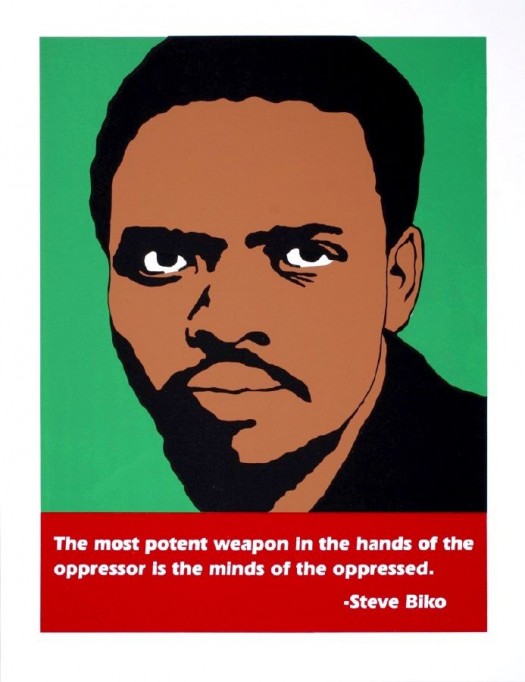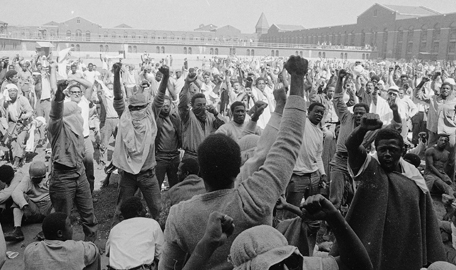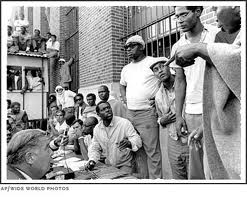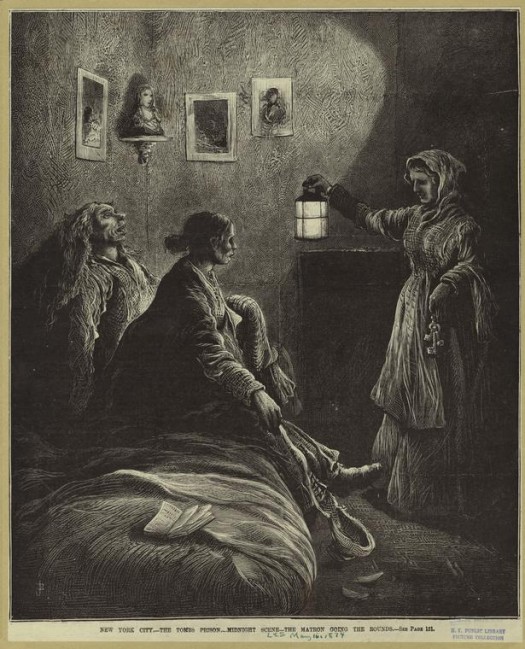Attica Prison Uprising, Final Day: Bloody Monday (September 13, 1971)
September 13, 1971: Bloody Monday. Rockefeller orders thousands of National Guardsmen, State Troopers and Corrections Guards to attack the prisoners. Hundreds of prisoners are shot. The State’s forces also shoot and kill nine of the hostages. The prisoners have no guns. Many of the alleged leaders of the rebellion are selectively marked and assassinated by the State’s forces. 39 men (prisoners and hostages) die in the retaking of the prison. The Corrections Department says the hostages’ throats were slashed by the prisoners (a lie). Guards torture and beat prisoners.
Here’s how Carl Jones-EL recalls the events of September 13th:
“The thirteenth, everyone was in the yard and there was a lot of tension, because you could see that these people were getting ready to come in. They was going to use force. Now from where I was, I’m in the middle of the yard, so to speak, near the trench. Next thing I knowed there’s this big helicopter flying over us and tear gas coming from everyone, and there’s a whole lot of shooting and carrying on. So naturally, everyone is running for cover. So I’m next to the wall and I note that around me everyone is hiding his face and guys spitting in rags and putting it to their nose. But what I know was troopers start coming from everywhere, then I start seeing different people fall, you know, they was shot. Guys was losing their hands and shot in the head and the neck. Like it’s been stated about indiscriminate firing. I don’t see it as indiscriminate firing because the people that were shot, and the people that were killed, they were selected, man. How you going to call this indiscriminate? You take the troopers that came in, they wasn’t hurt. Now if it was indiscriminate, why didn’t some of them get hurt? You see, why was it just inmates and hostages that got shot, that got killed? At the same time the helicopter was flying overhead, the helicopter was telling everyone to surrender and they wouldn’t be hurt. A lot of people were doing this and they were still getting shot. They were putting their hands up and this helicopter just kept flying around talking about surrendering and nobody would get hurt. So after everyone seen what was happening, they didn’t come out. It was a slaughter like, man, the people were defenseless. They had sticks and homemade weapons to defend themselves, but this doesn’t compare, man, with magnums and carbines. This is ridiculous, you know .”
Below is an excerpt from a forthcoming film about the Attica prison uprising titled “Criminal Injustice: Death and Politics at Attica.”






